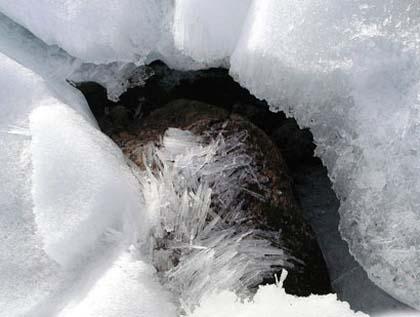Ice at room temperature

Ice at room temperature? It is not a contradiction, it is possible. However, this requires a hard electric field, in which researchers have shown that warm water is in the form of ice.
Water molecules are dipoles: most electrons are concentrated at one end of the molecule, so this difference acquires a negative charge and the other is positive. In liquid water the loads are organized but not very strict. However, in an electric field, all molecules are sorted according to the load.
When the water freezes by cold temperature, the molecules are arranged in hexagons. According to the theories of physicists, the same should happen by a powerful electric field. However, after performing simulations, it seemed that this electric field should be huge (109 volts per meter).
Researchers at the University of Seoul have shown that the drills were wrong. In fact, simulations have achieved this effect with an electric force thousand times lower than announced. Specifically, using a force of 106 volts per meter and at a temperature of 20ºC, they have discovered that a layer that seems solid is formed in a drop of water.
The researchers have not yet confirmed that the molecules of this layer are organized as in ice, but they have been able to check how the freezing process starts.
Photo: Richard Olsson/www.freenaturephotos.com
Buletina
Bidali zure helbide elektronikoa eta jaso asteroko buletina zure sarrera-ontzian











